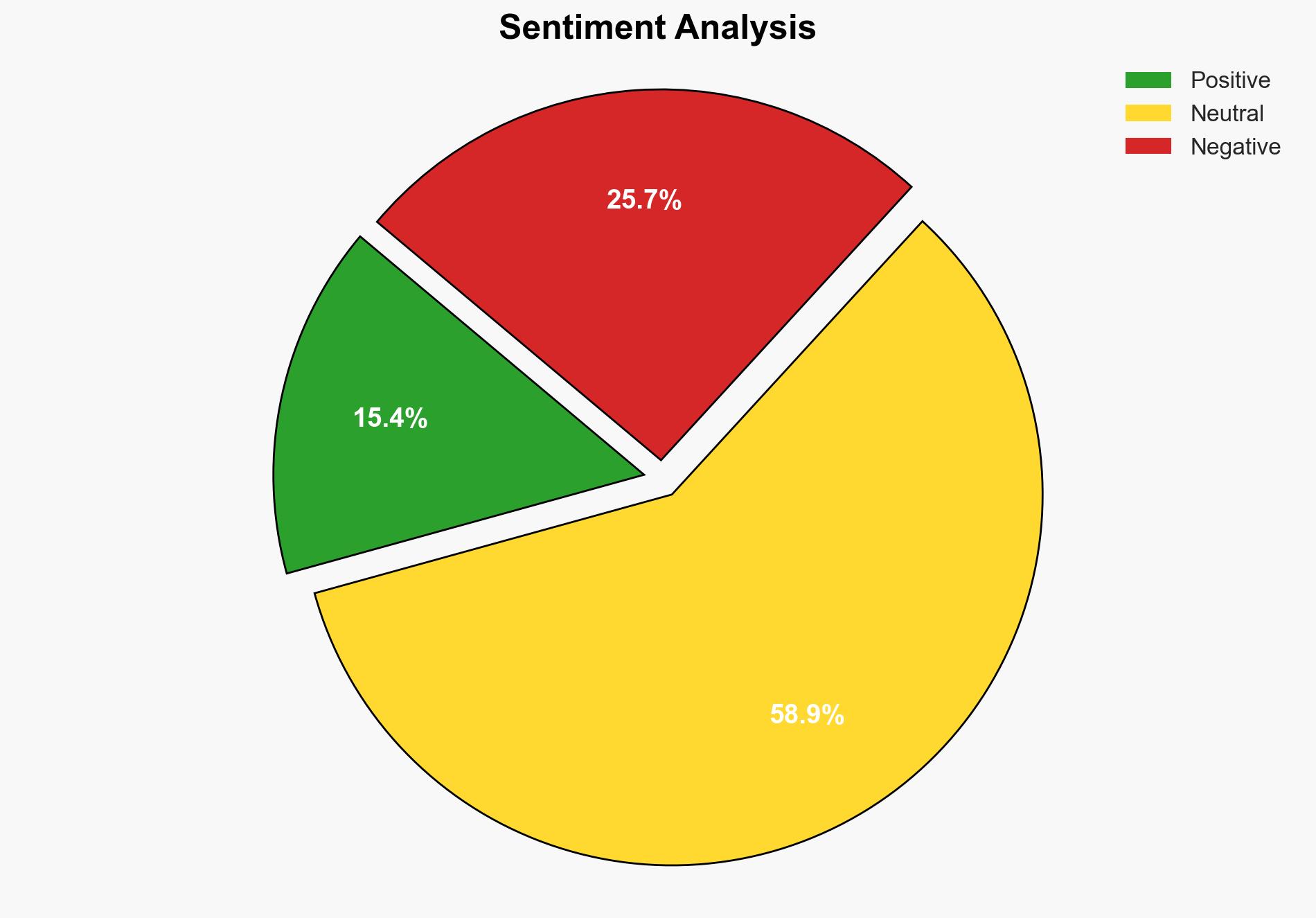Whitney Webbs One Nation Under Blackmail uncovers the extensive collaborative history between US intelligence agencies and organized crime – Naturalnews.com
Published on: 2025-02-28
Intelligence Report: Whitney Webbs One Nation Under Blackmail uncovers the extensive collaborative history between US intelligence agencies and organized crime – Naturalnews.com
1. BLUF (Bottom Line Up Front)
The book “One Nation Under Blackmail” by Whitney Webb reveals a historical narrative of collaboration between US intelligence agencies and organized crime. This partnership, initiated during World War II, was driven by strategic wartime needs and has led to long-term implications for national security and corruption. Key findings suggest that these alliances have facilitated the expansion of organized crime into political and business sectors, with enduring impacts on global drug trade and intelligence operations. Recommendations include reviewing historical alliances for current vulnerabilities and enhancing oversight mechanisms.
2. Detailed Analysis
The following structured analytic techniques have been applied for this analysis:
Scenario Analysis
The historical collaboration between intelligence agencies and organized crime presents multiple future scenarios. These include potential threats to national stability if similar alliances persist or are re-established in modern contexts.
Key Assumptions Check
The assumption that wartime exigencies justified alliances with organized crime is challenged. The analysis questions whether such partnerships were necessary or if alternative strategies could have been employed.
Indicators Development
Indicators of escalating threats include increased political influence by organized crime, resurgence in global drug trafficking networks, and potential infiltration of intelligence operations by criminal entities.
3. Implications and Strategic Risks
The collaboration between intelligence agencies and organized crime poses significant risks to national security, including potential corruption within governmental and intelligence structures. The historical precedent of such alliances could inspire similar modern-day collaborations, threatening regional stability and economic interests. The integration of organized crime into legitimate enterprises further complicates regulatory and enforcement efforts.
4. Recommendations and Outlook
Recommendations:
- Conduct a comprehensive review of historical intelligence alliances to identify current vulnerabilities.
- Enhance oversight and accountability mechanisms within intelligence and governmental agencies.
- Implement regulatory frameworks to prevent organized crime infiltration into legitimate sectors.
Outlook:
In a best-case scenario, increased oversight and regulatory measures could mitigate risks and prevent future collaborations between intelligence agencies and organized crime. In a worst-case scenario, failure to address these issues could lead to heightened corruption and instability. The most likely outcome involves gradual improvements in oversight, with ongoing challenges in fully disentangling historical alliances.
5. Key Individuals and Entities
Significant individuals mentioned in the report include Whitney Webb, Joseph “Joe Socks” Lanza, Meyer Lansky, Frank Costello, Charles “Lucky” Luciano, Thomas Dewey, and Garland Williams. These figures played pivotal roles in the historical narrative of collaboration between intelligence agencies and organized crime.





